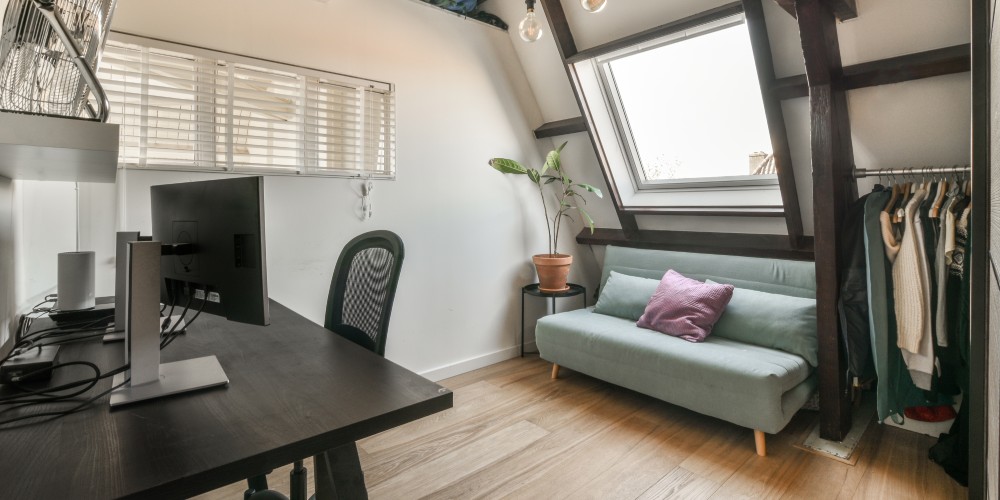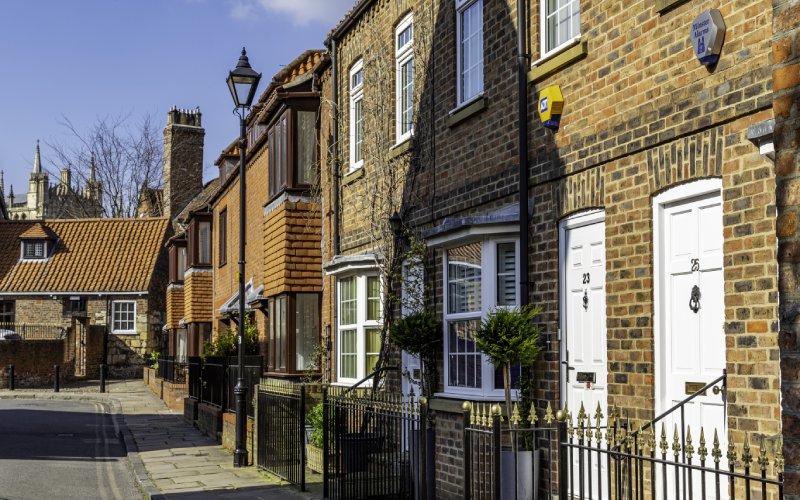UK house prices continue to rise, making many homeowners look for ways to create extra space without moving.
A loft conversion can offer a practical solution, but financing such a significant project requires careful planning. Most homeowners will need to borrow £30,000 or more, making it essential to understand all the available options.
This guide will help you understand the real costs involved and explore different ways to fund your project.
Whether you’re planning a simple room conversion or a more complex development with bathroom facilities, you’ll learn which financing options best suit your circumstances.
Why Consider a Loft Conversion?
Money spent converting your loft can be a sound investment.
Recent figures show adding an extra bedroom or home office through a loft conversion could boost your property’s value by 15-20%. For a house worth £300,000, that’s an extra £45,000 in value – often more than the conversion costs.
Beyond the financial rewards, you’ll gain valuable living space without sacrificing any outside area.
Many homeowners find a loft conversion perfect for creating a quiet home office, an extra bedroom for a growing family, or a peaceful retreat away from the bustle of the main house.
Your existing roof space might offer more potential than you realise.
Modern conversion techniques can transform even modest lofts into bright, welcoming rooms. Smart design features like dormer windows or thoughtfully placed skylights can flood the space with natural light.
Understanding the Costs
Before exploring financing options, let’s examine the real costs of a loft conversion.
Basic projects start from £27,500, while more ambitious conversions with bathrooms or complex structural work can reach £75,000 and beyond.
| Type of loft conversion (30m²) | Average cost | Timescale (weeks) | Cost range – Low | Cost range – High |
|---|---|---|---|---|
| Velux | £27,500 | 4-6 | £22,500 | £30,000 |
| Dormer | £50,000 | 10-12 | £40,000 | £60,000 |
| Hip-to-gable | £60,000 | 10-12 | £50,000 | £70,000 |
| Bungalow (50m²) | £75,000 | 10-12 | £62,500 | £87,500 |
| Modular | £45,000 | 2-3 | £30,000 | £60,000 |
| Mansard | £65,000 | 8-10 | £50,000 | £80,000 |
| Shell | £30,000 | 8-10 | £22,500 | £37,500 |
Price information from checkatrade.com, last updated: December 2024
Here’s what influences these costs:
Your existing roof structure plays a big part in the final price. Some homes need minimal alterations, while others require substantial structural changes to create enough headroom. This alone can add £5,000-£15,000 to your project.
The style of conversion affects costs significantly. A straightforward room with skylights might suit a smaller budget, whereas adding a dormer window with an en-suite bathroom involves more complex work and higher expenses.
Location also impacts your budget considerably. Labour rates vary across regions – London and South East prices often run 20-30% higher than other areas. Material costs fluctuate too, particularly for items like timber and steel.
Don’t forget to account for professional fees and approvals. Building regulations approval, structural engineer reports, and architect fees all add to the total.
Setting aside a 10% contingency fund helps cover unexpected issues during construction.
Get access to expert brokers and over 100 lenders
Planning Requirements and Recent Changes
In 2024 the UK government announced changes to make loft conversions easier for homeowners.
Many loft conversions already fall under ‘permitted development rights‘ (PDR), meaning they don’t need planning permission if they meet certain conditions:
- Extensions must not exceed 50m³ (or 40m³ for terraced houses)
- The conversion can’t be higher than the current roof
- Materials should match the existing house
- The property can’t contain flats
- The building must not have had previous storey additions under PDR
Under new rules, homeowners will have more flexibility with upward extensions, though they must still complement neighbouring properties and maintain safe access.
This could make financing a loft conversion more appealing, as the planning process should become more straightforward.
Before applying for finance, check whether your project needs planning permission. Even if permission isn’t required, you’ll still need Building Regulations approval to ensure the conversion meets safety and structural standards.
Main Financing Options
Let’s look at different ways to fund your project
Remortgaging
When you remortgage for a loft conversion, you switch your existing mortgage to a new lender while borrowing extra money for the work at the same time. This gives you the ability to pick a new lender and a new deal.
The additional borrowing becomes part of your new mortgage, spreading the cost over a longer term. Monthly payments might be lower compared to other borrowing types, though total interest costs could be higher over time.
Always check your current mortgage terms before deciding as Early repayment charges in your existing deal might make remortgaging expensive right now.
If that’s the case then you could wait until the ERC’s have ended, or borrow the money in a different way.
Read more: How to Remortgage for Home Improvements
Further Advances
A further advance lets you borrow more from your current mortgage lender without changing your existing loan terms.
This suits homeowners happy with their current mortgage who want to avoid early repayment fees.
You’ll need a good payment history and enough equity in your property. Lenders assess your income and outgoings carefully before approving additional borrowing.
Remember, the new loan portion will come with different terms from your main mortgage.
Read more: What is a further advance mortgage?
Secured Home Improvement Loans
A secured home improvement loan works alongside your mortgage as a second charge.
These loans suit homeowners who want to keep their existing mortgage unchanged, perhaps because they have an excellent rate they don’t want to lose.
You can often borrow substantial amounts, making these loans suitable for larger conversions.
They are an alternative to further advances and the loan uses your property as security but sits behind your mortgage in priority. This means lenders look closely at your property’s value and your ability to manage both sets of payments.
Many homeowners choose this route when remortgaging doesn’t make financial sense. The application process often moves more quickly than a remortgage, which helps if you need to secure a builder or meet project deadlines.
Read more: What can you use a secured loan for?
Personal Loans
For smaller loft conversions or when you need to top up other funding, unsecured personal loans can provide a straightforward solution.
Most lenders offer up to £25,000, perfect for less complex projects or partial funding.
One big advantage is that unsecured loans don’t put your home at risk, as there’s no charge at Land Registry.
You’ll have fixed payments over a set term, making budgeting simpler. The application process tends to be quicker than secured borrowing, and you won’t need a property valuation.

Making the Right Choice
Choosing the best financing option means looking carefully at your own circumstances.
Consider how much equity you have in your property – this affects your ability to remortgage or take out a secured loan. Look at your income and monthly budget to ensure you can comfortably afford the repayments.
Think about timing too.
If your current mortgage deal ends soon, remortgaging might work perfectly. But if you’re midway through a fixed term with high early repayment charges, other options could save you money.
Your credit score influences which choices are available and what rates you’ll be offered. A strong credit history opens up more options and better rates across all types of borrowing.
Secured loans can be useful in these circumstances, as the lenders are more flexible concerning minor credit blips.
Read more: Borrowing for home improvements
Application Process
Getting your finance in place needs careful preparation.
Start gathering your documents early – lenders will want to see:
Your last three months’ payslips and bank statements show your income and spending patterns.
Self-employed applicants need two or three years of accounts or tax returns. Collect recent mortgage statements and proof of any other regular financial commitments.
You’ll also need detailed plans and quotes for the conversion work. Most lenders want to see exactly how you’ll use the money. Having planning permission in place, if needed, strengthens your application.
Related reading: How to get mortgage ready
How a Broker Can Help
Working with an independent mortgage broker can simplify the process of raising the extra money.
They understand which lenders offer the best terms for loft conversion finance and often access deals not available on the high street. Their experience helps identify potential problems before they affect your application.
By working with an experienced adviser you will be able to compare different types of borrowing, and understand the cost of remortgaging, including any exit penalties.
Brokers save you time by approaching only suitable lenders for your situation.
They handle the paperwork and liaise with lenders, solicitors, and valuers. This support proves especially valuable when dealing with more complex applications or if you’re self-employed.
Read more: What are the advantages of using a mortgage broker?
Next Steps
Start by getting several detailed quotes from reputable builders.
This gives you a clear budget to work with. Check whether you need planning permission and factor this into your timeline.
Speaking with a mortgage broker helps you understand exactly what’s possible with your circumstances. They’ll explain your options clearly and help you find the most cost-effective way to fund your project.
Ready to explore your financing options?
Contact us today and we’ll connect you with a specialist broker who can help you find the right solution for your loft conversion plans.
Frequently Asked Questions
The amount depends on your property’s equity, your income, and chosen finance method. Most lenders offer loans from £25,000 with loan-to-value ratios up to 80-90% of your property’s value.
Lenders don’t require a deposit, remortgaging, secured loans or further advances use your existing equity as security.
Timeframes vary: personal loans can be approved within days, while remortgaging typically takes 4-6 weeks. Secured loans usually complete within 2-4 weeks.
Read more: How long does it take to get a secured loan?
Yes, most lenders allow you to finance multiple improvements together. Just ensure your quotes and plans cover all intended work.
You switch your current mortgage to a new deal while borrowing extra for the conversion. The new loan is based on your property’s value and your ability to repay.
Remortgaging pays off your current mortgage and creates a new agreement, while further advances add to your existing mortgage debt. Secured loans run alongside your mortgage. Personal loans don’t affect your mortgage directly but are included in any mortgage affordability calculations.
Read more: Can you get a mortgage if you have a loan?
For further advances, most lenders want to see 6-12 months of mortgage payments before offering additional borrowing.
A few of the mainstream lenders restrict offering new mortgages where you have owned the property for less than six months. This is commonly known as the six month mortgage rule.
Read more: What is the 6 month mortgage rule?
With a further advance you are borrowing extra money from your current lender. The new loan is separate from your mortgage and will have a different interest rate.
Remortgaging involves applying for a new capital raising remortgage with a different lender.
Permitted Development Rights are rules that let you make certain changes to your property without needing full planning permission. Think of them as pre-approved permissions for common home improvements.
Key points:
- They cover things like extensions, loft conversions, garage conversions and outbuildings
- Each type of development has specific size and height limits
- Different rules apply to flats, listed buildings and properties in conservation areas
- Some councils have extra restrictions (called Article 4 Directions)
- You might need ‘Prior Approval’ for some projects
- Building Regulations approval is often still needed
- If you break the rules, you could face enforcement action
To stay safe, always check with your local council before starting work, even if you think your project falls under PDR. You can also get a Lawful Development Certificate to confirm your project is allowed.
Read more: www.planningportal.co.uk/permitted-development-rights


